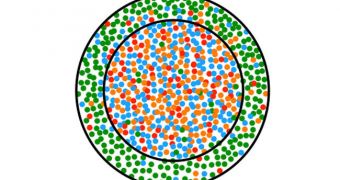A collaboration of American researchers provides the first experimental proof that atmospheric particles can experience a type of phase change that leads to the separation of organic compounds in their composition from the inorganic ones.
The findings could be used to generate more accurate models to predict climate change, as well as a better understanding of how air quality evolves over a polluted city during the day-night cycle, or after a storm. This type of research has never been successfully concluded before.
Scientists at the University of British Columbia (UBC) and the Harvard University say that atmospheric particles are omnipresent above Earth's surface, and especially above large cities. They increase in amount wherever there are harmful chemicals released in the environment.
The fact that these tiny particles can separate into distinct chemical compositions during their life cycle is a significant discovery, which could also be used to predict air quality conditions well in advance. This would allow people who suffer from asthma to limit their exposure to pollution.
“We’ve confirmed experimentally that changes in relative humidity can separate the organic and inorganic material in individual atmospheric particles into distinct liquid phases, much like oil separates from water,” Allan Bertram explains.
The expert, a UBC professor, holds an appointment as the director of the collaborative research and training program on atmospheric aerosols at the university, and was also a co-principal investigator on the new study.
A paper detailing the findings is published in the latest issue of the esteemed journal Proceedings of the National Academy of Sciences (PNAS). One of the key components in urban air quality, the team says, is the reactive chemistry of atmospheric particles, which the new study deciphers in detail.
“Having two liquid phases rather than one can change the rates of chemical reactions on particles, may change the amount of light the particles reflect and absorb, and impact their ability to act as seeds for clouds,” Bertram explains.
A change in the amount of sunlight being reflected back to space could mean the difference between a very warm and a relatively cool day. Temperatures also influence clouds formation, as well as the release of harmful aerosols from heated tarmac and other construction materials.
“We need to understand as much as possible about the chemical composition, physical properties and interactions of atmospheric particles if we’re going to assess how they impact human health, regional weather patterns, and even global climate change,” Bertram concludes.

 14 DAY TRIAL //
14 DAY TRIAL //